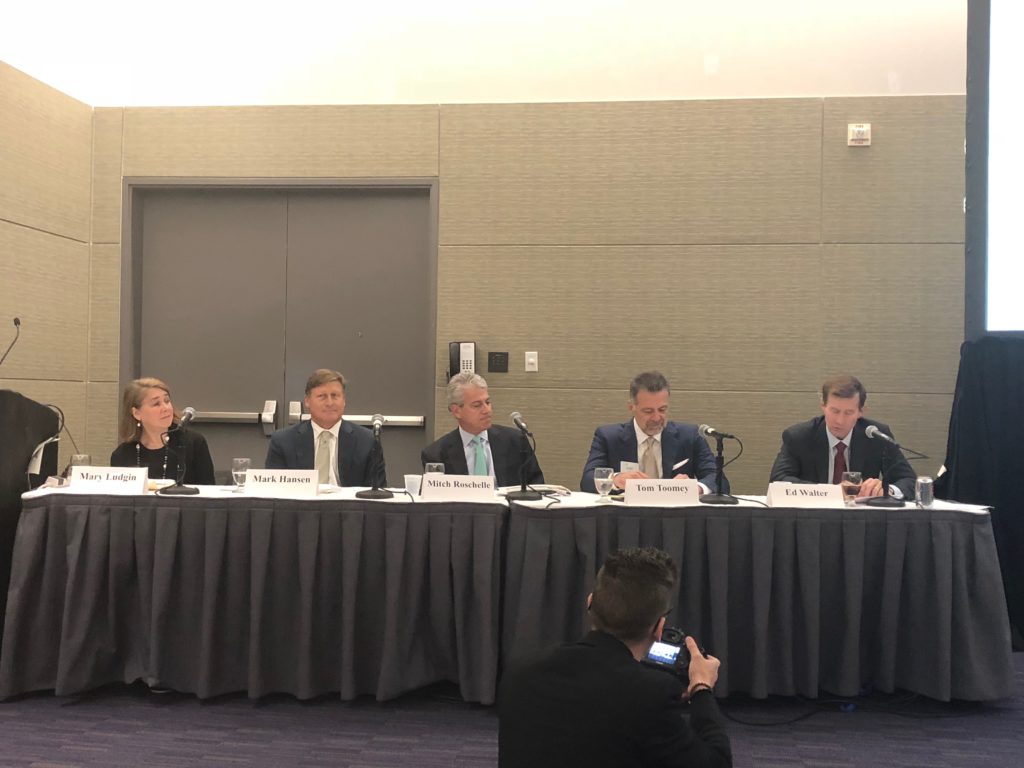Top Commercial Real Estate Trends to Watch in 2019

Slow and steady growth coupled by cautious optimism seemed to be the overall sentiment shared by real estate economists and industry experts at the 2018 ULI Fall Meeting in Boston, where panelists revealed their forecast for the U.S. economy and real estate market heading into 2019, as well as the annual ULI-PwC Emerging Trends in Real Estate Report, which discusses major trends to watch over the next several years.
The overall outlook for the U.S. economy was positive, according to a forecast of 45 economists and analysts surveyed by ULI in September 2018, with expectations for continued, moderate growth despite a sea change in macroeconomic policy, including rising interest rates, tax reform, and more restrictive immigration.
Fundamentals are expected to remain strong through 2020, with a slight moderation in some areas. Highlights include:
• GDP growth: The survey forecasts GDP growth to end this year at 3.0%, before it slows to 2.5% in 2019 and 1.7% range in 2020.
• Unemployment rate: The current record-low rate of 3.8% is expected to bump up slightly to 4.0% by 2020.
• Transaction volume: Volume is projected to decline slightly to $475 billion in 2018, down 3% from 2017, with $450 billion and $415 billion forecast for 2019 and 2020, respectively.
• Real estate prices: The Moody’s/RCA Commercial Property Price Index is expected to decline a bit over the next three years to 6%, 5%, and 4%, respectively.
• Rent growth: Expectations rose for multifamily, with growth averaging 2.5% over the next three years.
Overall, strong GDP and job growth should support solid demand for real estate assets through the rest of 2018 and 2019, with slow but still positive growth in 2020. If growth does continue through 2020, the current expansion will be one of the longest on record.

Emerging Trends and Markets in Real Estate
While the global financial crisis has had the largest impact on the real estate industry over the last decade, technology was discussed as the biggest disruptor for the industry in the coming years, according to PwC and ULI’s 2019 Emerging Trends in Real Estate report.
From ride-hailing and driverless cars to package delivery and artificial intelligence, new technologies are expected to impact all real estate sectors and industry players will need to adapt to these changes.
In the multifamily sector, the growing preference among renters is for specialized amenities, including event spaces and services, noted Tom Toomey, ULI Global Chair and CEO of UDR, Inc. Renters would often rather socialize in common spaces than spend time in their own apartments, and apartment owners are catering to these changing lifestyle preferences by offering a variety of amenities.
Despite the last several years of discussion regarding Millennials staying in downtown cores, another emerging trend is aging Millennials beginning to follow in the path of the older generations, the report noted. They are moving out to the suburbs to find more space and good education systems, but these areas aren’t the typical “suburbs” they grew up in, said Mitch Roschelle, partner at PwC.
He added that the suburbs they’re moving to are more walkable, with parks and cultural elements, creating a more city-like feel.
The annual report also named the top 10 markets to watch, which this year included cities known for their strong talent pool and economic diversity. Dallas/Fort Worth took the top spot, due to its young labor force and relative affordability. Brooklyn might have been the biggest surprise this year, moving to the No. 2 spot. Brooklyn’s rise was largely due to the market’s strong multifamily and industrial investment outlook, noted Andy Warren, Director of Real Estate Research for PwC.
The full list included:
1. Dallas/Fort Worth
2. Brooklyn
3. Raleigh/Durham
4. Orlando
5. Nashville
6. Austin
7. Boston
8. Denver
9. Charlotte
10. Tampa/St. Petersburg
It’s notable that only two of the top 10 markets are considered “gateway markets,” illustrating investors willingness to expand into secondary and tertiary cities in order to find yield. These cities, seven of which are in the South, are largely displaying higher employment growth than the U.S. average, greater housing affordability, coupled with typically lower tax burdens and strong future growth potential. It’s no coincidence that aging Millennials are moving to the South more than any other region as they begin to start families.

